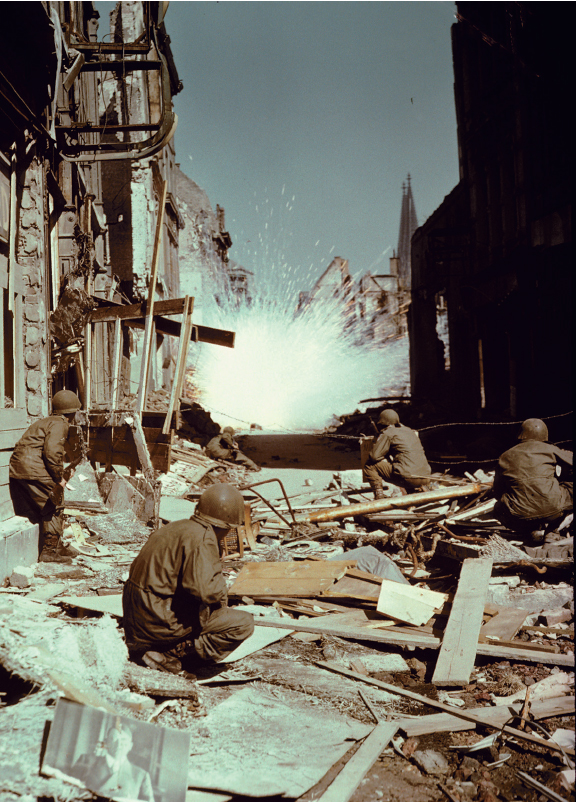The Attack on Pearl Harbor

The crucial provocation came not from Germany but from Japan. After Japan invaded China in 1937, Roosevelt had denounced “the present reign of terror and international lawlessness” and suggested that aggressors be “quarantined” by peaceful nations. Despite such rhetoric, the United States refused to intervene later that year when Japanese troops sacked the city of Nanjing, massacred 300,000 Chinese residents, and raped thousands of women.
FDR and other American officials prioritized events in Europe over those in East Asia, and without a counterweight, Japan’s military and imperial ambitions expanded. In 1940, General Hideki Tojo became war minister. After concluding a formal military alliance with Germany and Italy that year, Tojo dispatched Japanese troops to occupy the northern part of the French colony of Indochina (present-day Vietnam, Cambodia, and Laos). Tojo’s goal, supported by Emperor Hirohito, was to create a “Greater East Asia Co-Prosperity Sphere” under Japan’s control stretching from the Korean Peninsula south to Indonesia. Like Germany and Italy, Japan sought to match the overseas empires of Britain, France, Holland, and the United States.
The United States responded to the stationing of Japanese troops in Indochina by restricting trade with Japan. Roosevelt hoped that these economic sanctions would deter Japanese aggression. But in July 1941, Japanese troops staged a full-scale invasion of Indochina. Roosevelt then froze Japanese assets in the United States and stopped all trade with Japan, including vital oil shipments that accounted for almost 80 percent of Japanese consumption.
In October 1941, General Tojo became prime minister and accelerated secret preparations for war against the United States. By November, American military intelligence knew that Japan was planning an attack but did not know where it would occur. Early on Sunday morning, December 7, 1941, Japanese bombers attacked Pearl Harbor in Hawaii, killing more than 2,400 Americans. They destroyed or heavily damaged eight battleships, three cruisers, three destroyers, and almost two hundred airplanes.
Although the assault was devastating, it united the American people. Calling December 7 “a date which will live in infamy,” President Roosevelt asked Congress for a declaration of war against Japan. The Senate voted unanimously for war, and the House concurred by a vote of 388 to 1. The lone dissenter was Jeannette Rankin of Montana, a committed pacifist — she also voted against entry into World War I — and the first female member of Congress. Three days later, Germany and Italy declared war on the United States, which in turn declared war on the Axis powers. The long shadows of two wars, one in Europe and one in Asia, had at long last converged over the United States.